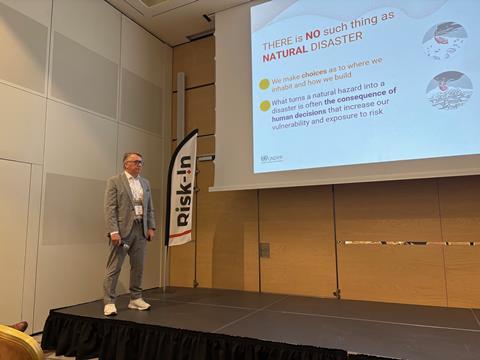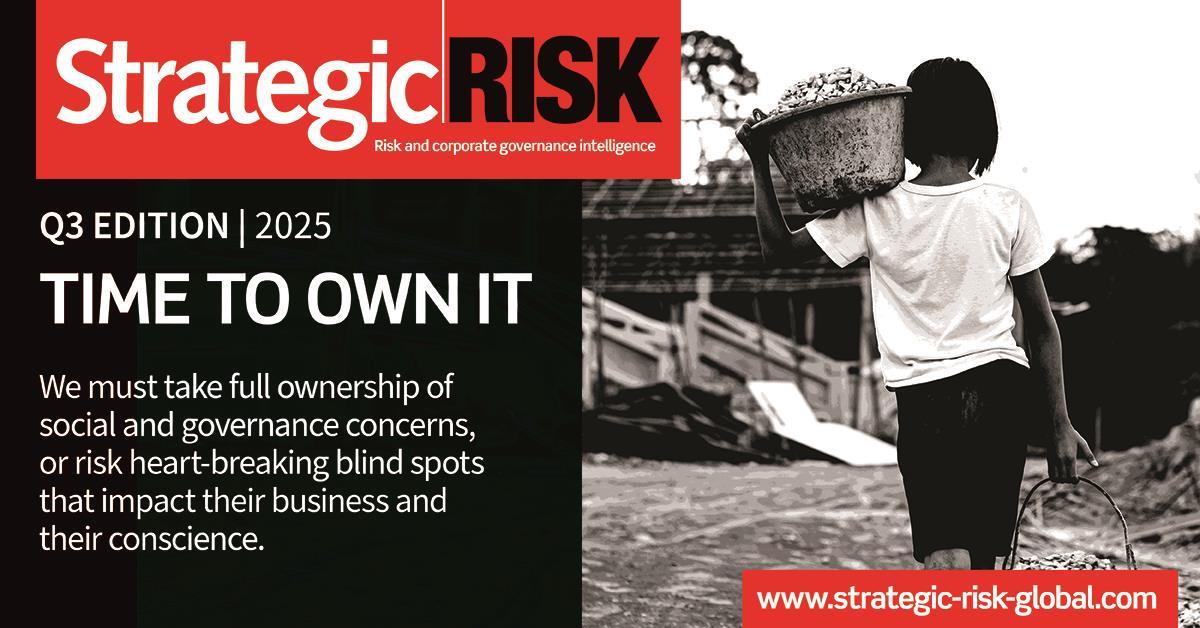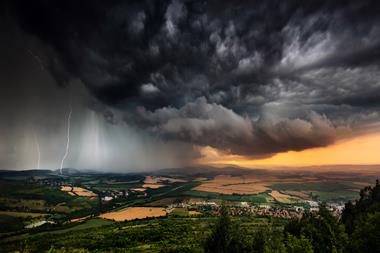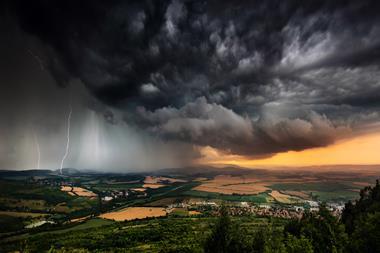At Risk-!n 2025, speakers warned that insurance is no silver bullet - and presented a practical new way for businesses to benchmark resilience maturity
At a time when disasters are intensifying and global interdependencies are exposing hidden vulnerabilities, risk managers need to rethink what resilience truly means.
For Laurent Giezendanner, head of corporate security at Syngenta, and Dr. Abhilash Panda of the United Nations office for Disaster Risk Reduction (UNDRR), the answer lies in collaboration, data, and a broader understanding of risk.

“We really mean, in essence, how do you absorb a shock, how do you recompose, and how do you continue to be active?” said Giezendanner, opening the session. Resilience, he added, isn’t a vague aspiration but a practical capability—one that must be developed across systems, sectors and geographies.
Challenging assumptions: No such thing as a natural disaster
To begin, Dr. Panda challenged the language often used in disaster management: “According to us, there is nothing called natural disasters. It’s the decisions that make a hazard into a disaster.”
He argued that risk transfer solutions like insurance are important but insufficient on their own. “I’m not saying that insurance is not needed,” he said, “but what is the equilibrium that needs to be addressed in this process? That’s what matters… Risk transfer is a proportion of how much of risk needs to be addressed.”
Panda also highlighted how data gaps, especially at the sub-national and SME levels, contribute to distorted views of exposure and resilience. “Once you hit below national level, there’s not a lot of data available,” he warned. “Insurance falls in the luxury category… Only 10 to 15% of people are insured.”
The systemic threat of underreported risk
These blind spots are particularly dangerous in today’s interconnected markets. Dr. Panda pointed out that the consequences of climate extremes, conflict or economic shocks in one country ripple across supply chains and geographies.
Many small-scale events go unnoticed in public-sector datasets. Yet when aggregated, these losses are significant—and growing. He warned that this incomplete picture distorts risk models and decision-making, especially in emerging markets, where insurance and institutional investment often intersect.
“We are already involved in a high-risk landscape of where business is being operated,” he said. “There are events happening [in emerging economies] which are going to affect all other markets.”
To illustrate the danger, he cited an internal analysis of one of the world’s largest pension funds, which revealed major exposure to climate-sensitive geographies.
Had this information gone public, it could have triggered significant capital flight. Instead, the UN is working with institutional investors to strengthen and retrofit those high-risk holdings—a solution-focused approach aimed at preventing both financial and social fallout.
From talk to tools: A global framework for assessing resilience
As part of the UN’s Chief Resilience Officer Network, Syngenta and others have co-developed a practical solution: the Resilience Maturity Assessment (REMA) tool.
This free, browser-based tool allows organisations to benchmark their resilience based on sector, size, and geography. It is deliberately lightweight—offering an instant self-assessment, maturity score, and access to a curated library of templates to support improvement.
The tool’s initial release, Giezendanner explained, prioritises accessibility over complexity. It collects no user data and avoids login barriers, which makes it easy for SMEs and local partners to use.
However, this simplicity comes at a cost: it limits comparative benchmarking and industry-specific insights for now. The 1.0 version, speakers said, is just the beginning. Future iterations may include industry-level data and richer analytics.
Beyond internal resilience, both speakers emphasised the importance of local and supply chain engagement. Giezendanner noted that even the most prepared company is vulnerable if the surrounding ecosystem collapses.
In regions like Pakistan’s Indus River basin or conflict-prone areas such as Kashmir, corporate operations depend heavily on local infrastructure, labour and logistics.
The REMA tool is designed to be used not only by corporates but by SMEs—who form the backbone of global supply chains.
The UN’s Arise initiative is already working with local business networks in places like the Philippines and Mexico to roll the tool out at national level. Giezendanner stressed that collaboration with these local networks is essential to ensure continuity in the face of disruption.
A launchpad for future progress
The REMA tool will be formally launched at the UN Global Platform for Disaster Risk Reduction in Geneva this
June. Designed initially by corporates for the private sector, it is now being adapted for public and SME use. The aim is to help thousands of organisations worldwide understand where they stand—and how to move forward.
While the tool is new, the challenges it addresses are not. As Panda concluded, resilience is not static. The risks organisations face evolve constantly. To stay ahead, they must embed agility into their systems, look beyond insurance, and work with partners across sectors and borders.














No comments yet